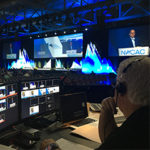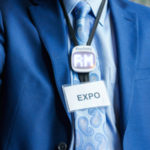But despite the avid interest, there hasn’t been a rich enough conversation about the subject, according to Owen, a member of the year-old Bandwidth and Connectivity Workgroup, which is a subgroup of the Convention Industry Council’s APEX Standards Review Council. As an industry, “we don’t know how to talk about [Internet access],” he said. “The sales folks don’t know how to talk about it and planners don’t know how to talk about it.”
 |
Part of the problem, he added, is that Internet access at a meeting too often is reduced to a simple question: Is there free Wi-Fi? “Internet access is not a yes-or-no question,” Owen said. Even if the answer to the question of whether a venue will supply free Internet access is yes, the amount of bandwidth that “free Internet” makes available often falls short of what attendees and conference organizers need and expect. “Free Internet may be acceptable if all you are going to do is grab email,” Owen said, “but it may not be appropriate for anything else.”
A more useful way to frame the conversation is around high-speed Internet access, he said, and what amounts are required to allow organizers to deliver digital meeting content and also meet the needs of attendees, many of whom bring two or three mobile devices with them. “It’s not like you’re going to have to give [attendees] enough bandwidth to download [‘Here Comes] Honey Boo Boo,’” Owen said, “but if you are going to encourage them to be connected, you’re going to have to give them enough bandwidth.”
One of the first steps meeting professionals can take is simply to become aware of the need to become educated on the fast-changing topic. “It’s an ongoing conversation,” Owen said.
In order to negotiate effectively about high-speed Internet access, planners must understand their own needs and those of their attendees — including vendors. Just as planners conduct post-event audits on food-and-beverage and room pickup, they also need to audit attendee Internet usage. Owen said: “You have to understand what your usage is and know your event history.”
WATCH
Michael Owen and Matthew Harvey, vice president for client network services at PSAV Presentation Services, talk highspeed Internet, part of The Intersection Series: Where Technology Meets Inspiration, presented by PCMA in partnership with PSAV.
“Production 360,” another Intersection Series video, where Jess Stephens — PSAV’s executive director of creative services — discusses the idea of “strategy that’s supported by a theme” and meeting design that’s “instrumental from the beginning to the end, and all the way back around again.” “Planning is basically logistics,” Stephens says, “but the differentiator between planners is one that understands a message — understands that you don’t put something in a room that doesn’t resonate with the objective of what the meeting is trying to do.”



